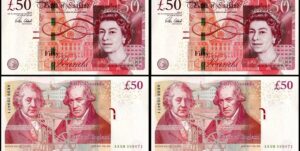
Ghana’s cedi has recently exhibited a remarkable surge against the US dollar, appreciating by over 40% since the start of 2025. This strength, which contrasts sharply with its historical volatility and depreciation trends, has provided Ghana with significant fiscal relief, notably easing the nation’s foreign debt burden and allowing for enhanced budgetary flexibility. The currency was trading near 10.20 cedis per US dollar as of late May 2025, a substantial improvement compared to its levels in the previous year when it reached an all-time low of 16.48 cedis per dollar in November 2024.
Several factors have contributed to this unexpected rally in the cedi. Key among them is Ghana’s adherence to its International Monetary Fund (IMF) program, which has reinforced investor confidence, along with the Bank of Ghana’s implementation of restrictive monetary policies aimed at currency stabilization. Increased remittances and foreign exchange inflows, along with improved mechanisms such as enhanced foreign exchange auctions, have also bolstered demand for the cedi. Additionally, rising gold prices, a crucial export for Ghana, have contributed to the currency’s appreciation, providing an external source of strength.
Government officials and financial experts acknowledge the currency’s positive momentum. President John Mahama noted a reduction of nearly 150 billion cedis in total government debt over five months, attributing this partly to the cedi’s gains. Nonetheless, the central bank governor confirmed that the currency’s strength has been achieved without drawing on foreign reserves, highlighting the success of current fiscal and monetary policies.
Despite these encouraging developments, experts caution against complacency. Analysts warn that the cedi’s surge could be partly temporary, influenced by external factors such as a global weakening of the US dollar due to policy signals from the United States and volatility in commodity prices like oil and cocoa. Forecast models even suggest the cedi may face depreciation pressures in the medium term, with projections indicating a possible exchange rate increase back above 11 cedis per dollar within the next year. Furthermore, a 2023 trend analysis had forecasted a steady rise in the cedi’s exchange rate against the dollar for the remainder of year, eventually declining through 2024 underscoring the cyclical and fragile nature of the currency’s performance.
In summary, while the Ghanaian cedi has recently gained strength against the US dollar, driven by sound policy and favourable market conditions, its ability to maintain this trajectory remains uncertain. Sustaining the cedi’s strength will require ongoing fiscal discipline, stable commodity exports, and continued supportive monetary interventions. Without these, the risk of renewed depreciation and economic pressures persists, underscoring the need for cautious optimism among policymakers and investors alike.





